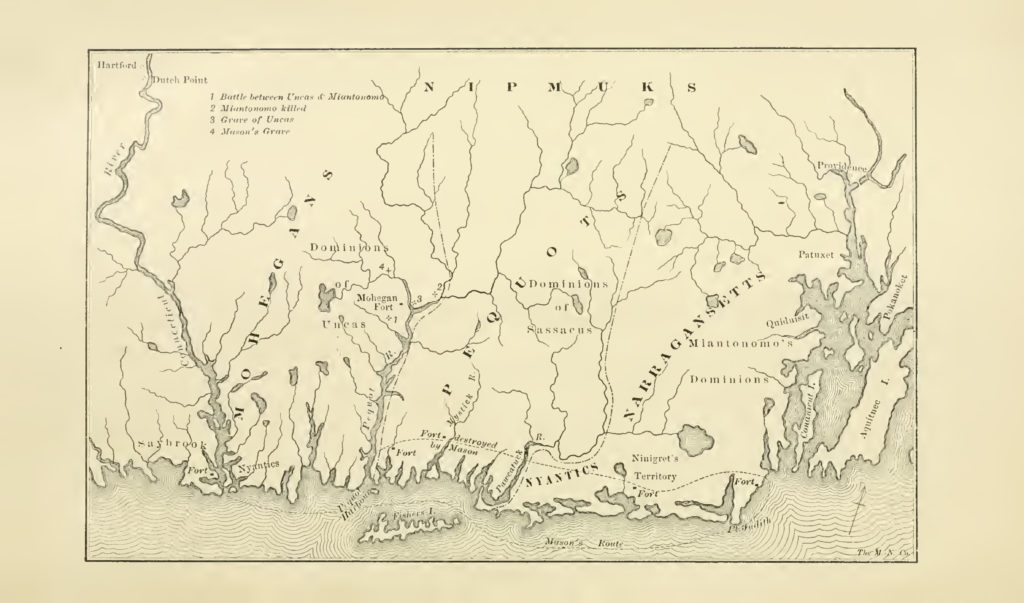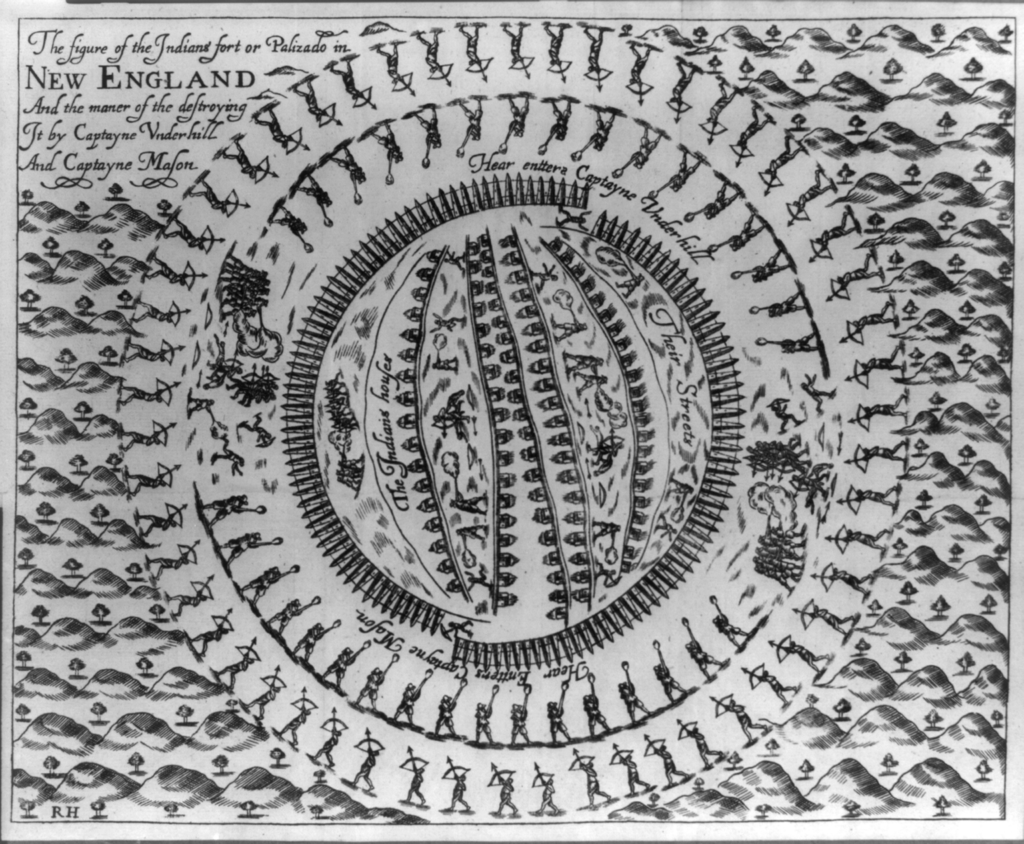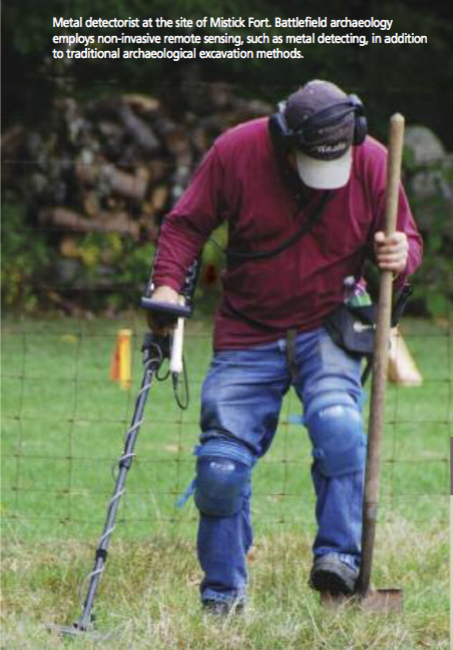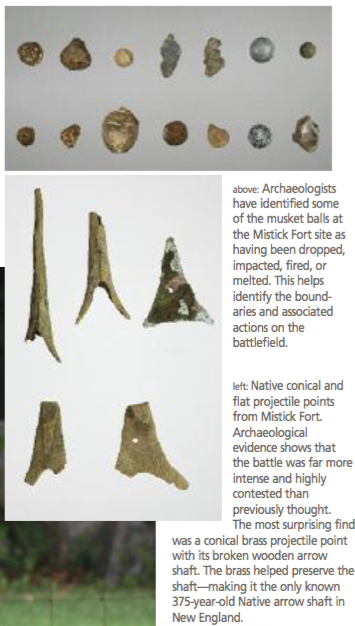The Pequot War

Map of the area that later became southeastern Connecticut and Rhode Island from the time of the Pequot War. From “History of the Pequot War: the Contemporary Accounts of Mason, Underhill, Vincent and Gardner,” The Helman-Taylor Company, 1897.
The Native Americans and the English settlers were on a collision course.
In the early 1600s, more than 8,000 Pequots lived in southeastern Connecticut. They traded with the Dutch. The Pequots controlled the fur and wampum trade. Their strong leaders and communities controlled tribes across southern New England.
It was a peaceful time between 1611 and 1633. But all was not well. Contact with Europeans during this period brought a deadly disease. Smallpox killed half of the Pequots by 1635.
 The English arrived in 1633. The English wanted to trade with the Native Americans, too. The Dutch and Pequots tried to stay in control of all trade. This led to misunderstanding, conflict, and violence.
The English arrived in 1633. The English wanted to trade with the Native Americans, too. The Dutch and Pequots tried to stay in control of all trade. This led to misunderstanding, conflict, and violence.
In the summer of 1634, a Virginia trader and his crew sailed up the Connecticut River. They took captive several Pequots as guides. It’s not clear what happened or why, but the Virginia trader and crew were killed.
The English wanted the Pequots punished for the crime. They attacked and burned a Pequot village on the Thames River and killed several Pequots.
The Pequots fought back. All winter and spring of 1637 the Pequot attacked anyone who left the English fort at Saybrook Point. They destroyed food and supplies. They stopped any boats from sailing up the river to Windsor, Wethersfield, and Hartford. More than 20 English soldiers were killed.
Massachusetts sent 20 soldiers to help the English soldiers at Saybrook Point. Then the Pequots attacked Wethersfield. They killed nine men and two women and captured two girls.
The Connecticut Colony’s General Court declared war on the Pequots.

Library of Congress
Ninety men from the three river towns were enlisted as soldiers. They sailed down the Connecticut River. Their plan was to attack two Pequot villages near Mystic. They added Mohegan, Wangunk, and other Indian allies. More than 250 Narragansetts joined them.
Seventy-seven British and 300 Native Americans marched 20 miles from Narragansett to near Mystic. They set up camp. They decided not to attack during daylight. They decided on a surprise attack at dawn.

Metal detectors at the Mistick Fort site. Battlefields of the Pequot War Project, Mashantucket Pequot Museum, as seen in Connecticut Explored, Fall 2013
On the morning of May 26, 1637, they marched the last two miles and attacked. Within two hours, 400 Pequots, including men, women, and children lay dead. Between 150 and 200 Pequot warriors were killed. The surviving Pequot fought back as the British returned to their ships. Even more Pequots fell in battle.
The massacre of the Pequots near Mystic was devastating. It showed the strength and brutality of the English against the Native peoples.
The Native Americans in Connecticut and New England survived and tried again to drive out the English from their ancestral lands 38 years later in a war called King Philip’s War.

Musket balls and projectile points found at site of Mystick Fort, Battlefields of the Pequot War Project, Mashantucket Pequot Museum, as seen in Connecticut Explored, Fall 2013
This essay is based on “Exploring and Uncovering the Pequot War” by Kevin McBride and Laurie Pasteryak Lamarre, Connecticut Explored, Fall 2013. Used by permission.



 The English arrived in 1633. The English wanted to trade with the Native Americans, too. The Dutch and Pequots tried to stay in control of all trade. This led to misunderstanding, conflict, and violence.
The English arrived in 1633. The English wanted to trade with the Native Americans, too. The Dutch and Pequots tried to stay in control of all trade. This led to misunderstanding, conflict, and violence.

